Squirrel Removal
Squirrel removal is needed when squirrels find and entry point into your home or business and cause damage. They will often gnaw on wood, cables or electrical wiring and almost any stored item.
Squirrels most commonly seen around Charlotte, North Carolina – Read More
Squirrels are mammals that belong to the family rodentia which are gnawers. They enter buildings to store food, find shelter and have their young. Besides creating holes in and around rooflines where weather can leak in; they chew electrical and other cables which create fire hazards.
Squirrels are active during the day exiting their sunrise and returning at sunset.
Their upper front and lower two teeth continually grow and they can chew through wood, vinyl, aluminum , lead sheathing, electrical/television/computer/phone/stereo cables, HVAC lines, cinder block, glass, mortar, brick, improperly cured concrete, wallboard, storage boxes, plastic, etc.
Once squirrels have lived in, over-winterized in, given birth in or been born in a building they “imprint” and return to structure over and over again like homing pigeons.
Have problem squirrels in your attic? We can help!
Squirrels are very territorial. Odor/smell is one their most important senses. They mark areas with urine and glandular secretions. They use their smell to recognize pathways to and from food and harborage, potential mates and to differentiate between their own group and strangers.
When dominant squirrels are removed from an area, new ones will take over that territory.
Squirrels will overwinter in homes to have their pups which mature after about 10-12 weeks. Litter sizes vary from 1-6 pups one or two times per year depending on food, water and harborage. Squirrels can live up to twelve years.
During the spring, summer and early fall squirrels very often move out into their “summer” homes in trees surrounding your home only to return in the late fall for their winter mating/spring birthing.
Squirrels will leave chew marks around the entire structure and they learn to attack the more accessible structural areas i.e. construction gaps or small seams around the roofline perimeter at roof decking/gutter fascia junctions, soffit overhang/gutter return junctions, roof to roof junctions, dormer/roof junctions, gable vents, foundation vents and all other inside and outside construction corners. Sometimes they will arbitrarily chew a hole in a roof or in the middle of an exterior wall.
Ectoparasites that attack the squirrels (mites, lice, fleas, ticks, bedbugs) will also infest surrounding areas; especially once the animals are removed.
Rabies are not prevalent in squirrels but any bites must be considered as such because they are mammals. The squirrel must be caught with its head (brain) intake for testing
Management/removal/exclusion:
- The most important part of squirrel management is a very thorough inspection to the interior of the attic, the exterior roofline perimeter and above (with ladders) and the entire remaining exterior of the home in general.
- We try and trap and eliminate as much of the resident squirrel population in each building as is possible.
- Simultaneously to trapping, we exclude (build out) the squirrel population’s secondary entrances. When no activity is noticed at primary entrances/trapping sites, we finalize the exclusion.
- We utilize galvanized steel flashing custom cut and bent specifically for gaps and the construction areas previously mentioned; primed and painted to blend in with the surrounding structure. Where ventilation is required we employ custom cut screens with galvanized steel hardware cloth for chimneys we will install metal chimney spark arrestor caps.
- Ask your technician about our squirrel removal/exclusion guarantee
Squirrel (gray, tree) removal available in Charlotte, Winston-Salem, Lake Norman, Mooresville, Weddington, Waxhaw, Pineville, Matthews. Huntersville, Davidson, Monroe, Concord, Lake Wylie, Rock Hill, Cornelius, Gastonia and surrounding areas in North and South Carolina.


